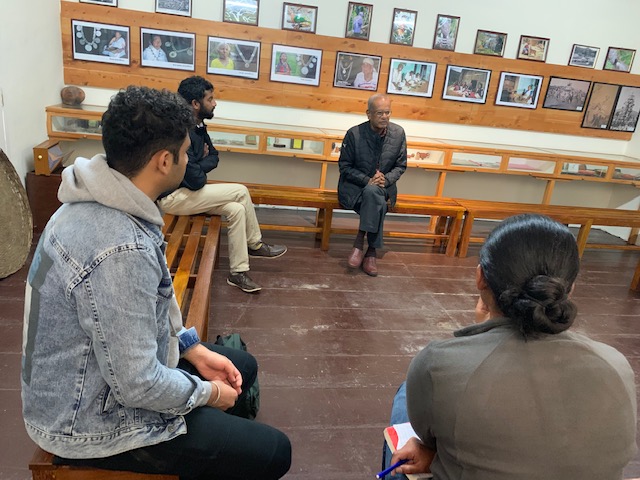The term Indigenous refers to someone or something (living things) originating, natural, native or inherent to a particular region or country. While the term was first officially used by the United Nations in 2002, it has remained a point of debate among many owing to its multiple perspectives of reference and usage – as a homogenizing concept within a colonial context for the ‘others’, or on the other hand as a self-identification process of communities.
It was with this word of caution about the term that Reverend Mulley started off this informal interactive session, organised to celebrate the UN declared ‘International Day for the World’s Indigenous Peoples’, on 9th of August, at the Sullivan Memorial Centre, Kotagiri. The event was co-hosted by the Nilgiri Natural History Society and the Kotagiri Citizen’s Collective. The reverend went on to provide an insight into the term, from the viewpoint of the 3Ps – philosophical, political and people’s angle. Reverend Mulley, a cultural historian and anthropologist who has worked extensively in studying the indigenous people, their culture, traditions and interactions needs no introduction in the Nilgiris landscape.


He shared valuable knowledge about how pastoral lands were traditionally shared between communities such as the ‘Todas’ and the ‘Badagas’. The conversation then went down the route of colonialism, conversion of the above said pastures to plantations and the drastic change in the landscape and consequently the lives of people within it. He also broached other systems of material-based interactions between communities – be it the Kotas who supplied the pots and metal equipment, or the Kurumbas who supplied the ‘Dhoopa’ to other communities.
Emphasis was also laid on close ritualistic interactions between the communities, which he stressed was unique to the Nilgiris landscape and not necessarily seen elsewhere between indigenous communities. Of special mention in this aspect was the Todas associated with the Badaga festivals, or Kotas playing music in Badaga funerals. Needless to say, all this triggered a rich interaction about these connections, and their current status ad threats to such cultural identities and their close ties to one another.
He also drew attention to the linguistic similarities between the communities wherein a Badaga would most likely, very easily understand the Kurumba speaking in his native tongue and vice versa; which raises interesting questions on the definition of who is considered indigenous by whom and since when. On a final note, Reverend Mulley expressed concern on the eroding of such cultural identities within communities in the modern era of progress and development as he stressed on the importance and significance of linguistic heritage being of paramount important and something that needs to be conserved, urgently. For if we lose the language of the heart, we essentially lose everything. Very apt as we dedicate this year’s observance to indigenous people’s languages.

The event concluded with a round of tea and refreshments amidst the monsoon rains that has arrived with force this year.
(By Sharada Ramadass)

